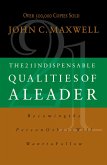The recent collapse of the Warsaw Pact and Soviet Union considerably reduced the threat of major conventional and nuclear conflict. The peace dividends associated with these momentous events, however, did not extend into the arena of low intensity conflict. Current global unrest suggests low intensity conflict is a significant and perhaps growing threat. While often overlooked, the government response to the 1963-1975 insurgency in Oman provides excellent examples of both ineffective and effective national-military strategies for combating a low intensity threat. Analysis of the Oman insurgency indicates that an effective national-military strategy recognizes the primacy of civil operations. Nevertheless, threatened governments must carefully integrate civil and military operations to eliminate insurgent power bases. The relevance of the Oman insurgency to current world affairs is evident in the highly volatile condition existing between Turkey and the Kurdistan Workers Party.
Hinweis: Dieser Artikel kann nur an eine deutsche Lieferadresse ausgeliefert werden.
Hinweis: Dieser Artikel kann nur an eine deutsche Lieferadresse ausgeliefert werden.







